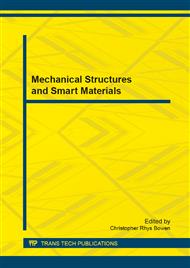p.98
p.102
p.106
p.110
p.114
p.121
p.127
p.131
p.135
Fibrous Material Density Difference Analysis Using Light Reflectance
Abstract:
The objective of this work is designed and fabricated a lab module tester to differentiate the different type of printing paper quality which available commercially was done. Laser light source was used to differentiate the quality of printing paper. The concept light reflectance on surface material was used in this study. The photodiode was used as photo detector to detect the reflected light from the surface of printing paper. The laser diode and photodiode were placed in a box which the box named light box. The laser was used to emit light on the sample and the photodiode detects light intensity from the surface printing paper in the light box. Different level of intensity will have different value of voltage output. The differentiation on the different type of printing paper including of 70 g/m2, 80 g/m2 and 100 g/m2 were done respectively. The result showed that the 100 g/m2 printing paper has a higher reflected voltage output compared to 80 g/m2 and 70 g/m2 printing paper.
Info:
Periodical:
Pages:
114-117
Citation:
Online since:
January 2014
Authors:
Keywords:
Price:
Сopyright:
© 2014 Trans Tech Publications Ltd. All Rights Reserved
Share:
Citation:


